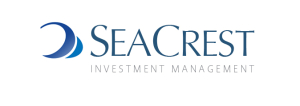For much of the second quarter, the markets could not decide whether it was time to panic and retreat or not. Despite many negative headlines, it was a challenge to clearly and emphatically determine a risk factor that justified a general move to safety in the markets. On the flip side, with domestic economic growth accelerating, unemployment rate dropping and wages rising, albeit slowly, there was plenty of good news as well. Only one thing was certain: market volatility. Nevertheless, the global economy and the U.S. markets seemed to fare well. There was clearly no need to panic.
During the second quarter of the year, the S&P 500 was up 3.43%, the Dow Jones Industrial Average was down 1.26% and the NASDAQ returned 6.61%. On the fixed income front, the iShares iBoxx High Grade Corporate Bond Exchange Traded Fund (ETF ticker: LQD) was down 1.53% while its high yield version, the largest “junk-bond” ETF by assets (ticker: HYG), was up 0.63%. The markets attempted to recover somewhat from the selloff during the first quarter, but arguably it was at a very timid pace. The only clear winner thus far in 2018 has been the tech industry. The strong momentum in these stocks is being driven by capital inflows into this sector with investors chasing the outperformance. This appears to be driven more by sector rotation than the actual profitability of the industry. Wall Street estimates that Amazon’s nearly 45% year-to-date return is responsible for approximately one-third of the S&P 500’s total return. Furthermore, if you add the outperformances of Microsoft, Apple and Netflix, then these four tech stocks represent approximately 85% of the S&P’s year-to-date total return! This phenomenon, we believe, presents a high negative headline risk of one of these behemoths triggering a broad market selloff. The Trump Administration going after Amazon or the impact on Apple as a result of a possible trade war retaliation from China are just two possible examples of such a risk.
As we look to the next quarter and the balance of 2018, three risk factors will be front and center for the markets. First, the hawkish stance by the US Federal Reserve Bank and the resultant higher rates could trigger an inverted yield curve, possibly predicting a slowing economy ahead and significantly impacting emerging markets to the down side. Next, any acceleration in trade wars with China, the European Union and our trading partners to the north and south could cause investors to take profits and move to the sidelines in light of this uncertainty. Finally, any surprises coming out of the ongoing Mueller investigation prior to the mid-term elections could result in a sharp move in the markets.
On the international front, Brexit negotiations, North Korea’s “Jekyll and Hyde” approach to denuclearization and Russia’s antics in the U.K. poisonings, Syria, etc. could impact the markets overseas. As the world observes the successful rescue effort of the soccer players from a cave near Chiang Mai, Thailand and as we move to the conclusion of the World Cup in Russia, let us hope for a de-escalation of geopolitical risk with a meeting of the minds of the world’s leaders for global peace and prosperity.
We continue to search for undervalued assets and urge investor caution about continued longevity of the nine year bull market. Stay tuned!
